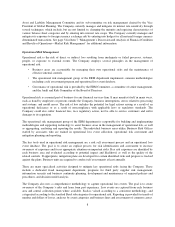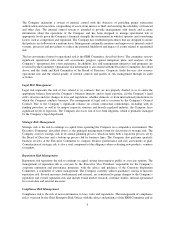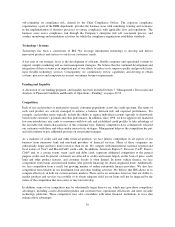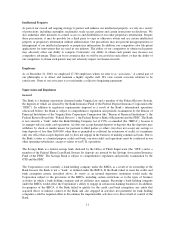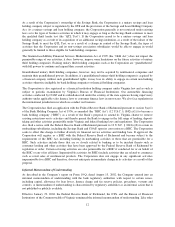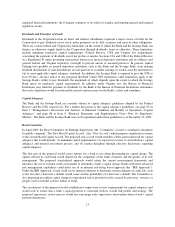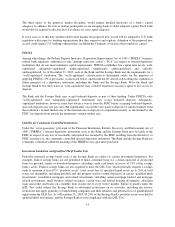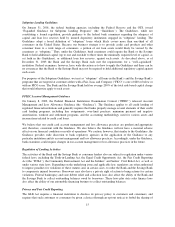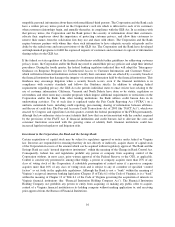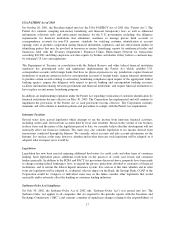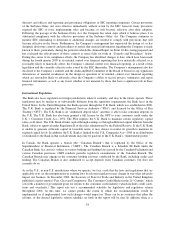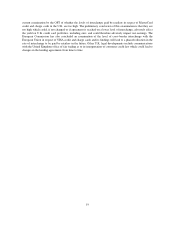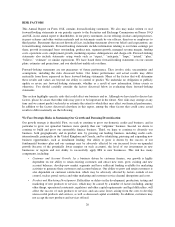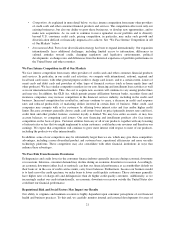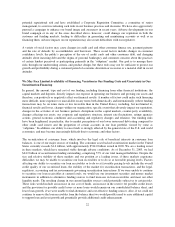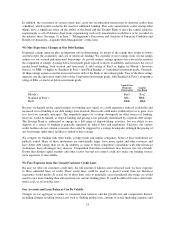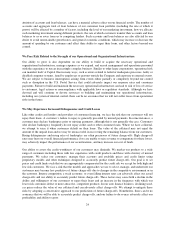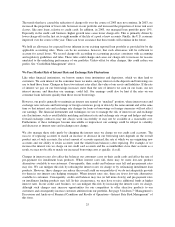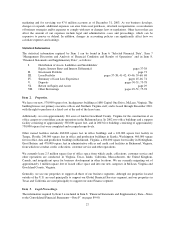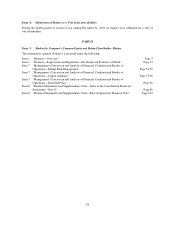Capital One 2003 Annual Report Download - page 36
Download and view the complete annual report
Please find page 36 of the 2003 Capital One annual report below. You can navigate through the pages in the report by either clicking on the pages listed below, or by using the keyword search tool below to find specific information within the annual report.directors and officers and reporting and governance obligations of SEC reporting companies. Certain provisions
of the Sarbanes-Oxley Act were effective immediately without action by the SEC; however many provisions
required the SEC to issue implementing rules and became, or will become, effective after their adoption.
Following the passage of the Sarbanes-Oxley Act, the Company has taken steps which it believes place it in
substantial compliance with the effective provisions of the Sarbanes-Oxley Act. The Company continues to
monitor SEC rulemaking to determine if additional changes are needed to comply with provisions that will
become effective in the future. Furthermore, the Company’s management has supervised the design of, or has
designed, disclosure controls and procedures to ensure that material information regarding the Company is made
known to them, particularly during the period in which this Annual Report on Form 10-K is being prepared and
has evaluated the effectiveness of those controls as more fully set forth in “Controls and Procedures” below.
During the course of its compliance efforts, the Company has identified changes to date, which have been made
during the fourth quarter 2003 to its internal control over financial reporting that have materially affected, or is
reasonably likely to materially affect, the Company’s internal control over financial reporting, as a result of this
legislation and the currently effective rules issued by the SEC thereunder. The Company’s management also has
disclosed to the Company’s auditors and the Audit and Risk Committee of the Board of Directors any significant
deficiencies or material weaknesses in the design or operation of its internal control over financial reporting
which are reasonably likely to adversely affect the Company’s ability to record, process, summarize and report
financial information, as well as any fraud, whether or not material, by those that have a significant role in these
processes.
International Regulation
The Bank also faces regulation in foreign jurisdictions where it currently, and may in the future, operate. Those
regulations may be similar to or substantially different from the regulatory requirements the Bank faces in the
United States. In the United Kingdom, the Bank operates through the U.K. Bank, which was established in 2000.
The U.K. Bank is regulated by the Financial Services Authority (“FSA”) and licensed by the Office of Fair
Trading (“OFT”). The U.K. Bank is an “authorized deposit taker” and thus is able to take consumer deposits in
the U.K. The U.K. Bank has also been granted a full license by the OFT to issue consumer credit under the
U.K.’s Consumer Credit Act—1974. The FSA requires the U.K. Bank to maintain certain regulatory capital
ratios at all times. The U.K. Bank obtains capital through earnings or through additional capital infusion from the
Bank, subject to approval under Regulation K of the rules administered by the Federal Reserve. If the U.K. Bank
is unable to generate sufficient capital in favorable terms, it may choose to restrict its growth to maintain its
required capital levels. In addition, the U.K. Bank is limited by the U.K. Companies Act—1985 in its distribution
of dividends to the Bank in that such dividends may only be paid out of the U.K. Bank’s “distributable profits.”
In Canada, the Bank operates a branch (the “Canadian Branch”) that is regulated by the Office of the
Superintendent of Financial Institutions (“OSFI”). The Canadian Branch is a Schedule III Bank under the
Canadian Bank Act, and it is subject to various banking and lending laws passed by the Canadian Parliament and
various Canadian provinces. OSFI conducts periodic regulatory examinations of the Canadian Branch. The
Canadian Branch may engage in the consumer lending activities conducted by the Bank, including credit card
lending. The Canadian Branch is also authorized to accept deposits from Canadian customers, but does not
currently do so.
As in the U.S., in non-U.S. jurisdictions where we operate, we face a risk that the laws and regulations that are
applicable to us (or the interpretations of existing laws by relevant regulators) may change in ways that adversely
impact our business. In December 2003, the Secretary of State for Trade and Industry in the United Kingdom
published a report entitled “Fair, Clear and Competitive: The Consumer Credit Market in the 21st Century” which
sets forth a number of government goals for reform to the consumer credit industry (which includes credit cards,
loans and overdrafts.) This report sets out a recommended schedule for legislative and regulatory reform
throughout 2004. At this time, we cannot predict the extent to which the recommendations would be
implemented or, if implemented, how such changes would impact us. There can be no assurance that either the
reforms, or the desired legislative reform schedule set forth in the report will be met. In addition, there is a
18


